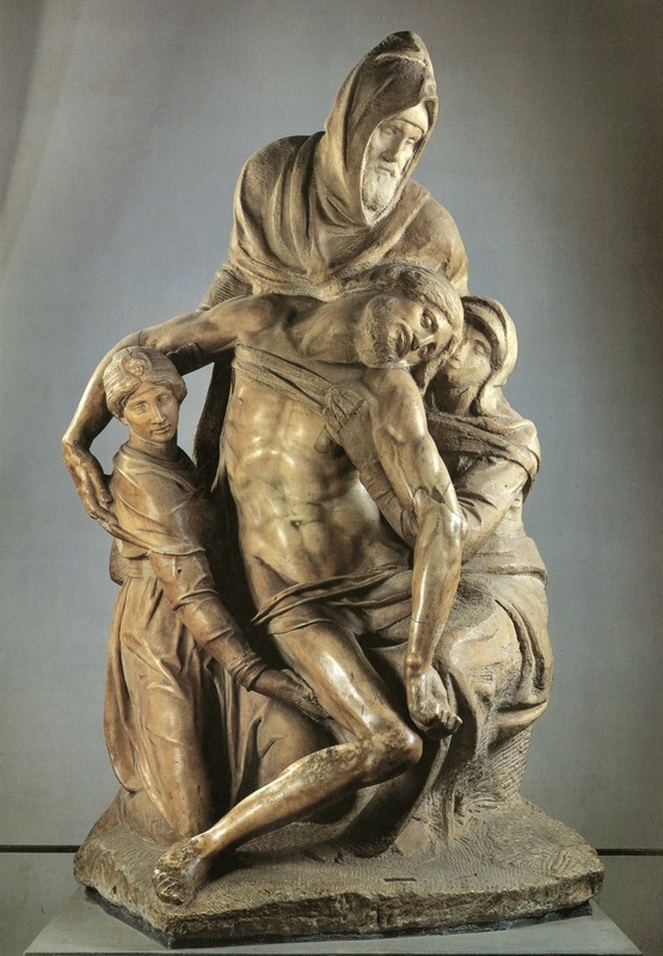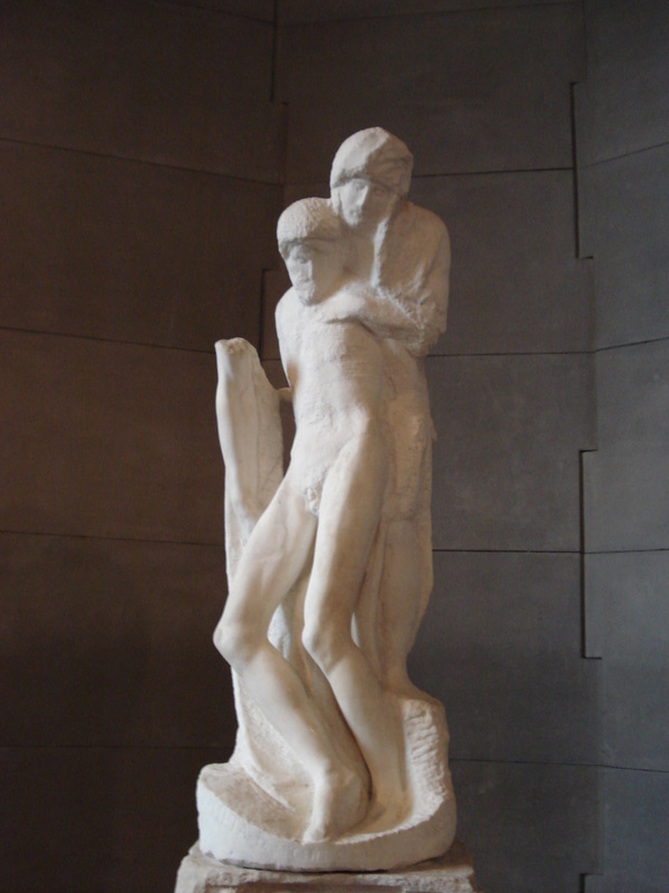
Michelangelo’s first true masterpiece, his sculpture of the Pieta, is a familiar image to many, whether they have traveled to St. Peter’s Basilica in Rome to see it, or not. A proud, young man in his early twenties at the time, the artist carved his name down Mary’s sash to prove that he indeed was the sculptor. Here, Mary gazes down at the body of her son, lying in her lap, as if he were a little boy who fell asleep in his mother’s arms. Her face is youthful and serene, devoid of sorrow. Michelangelo obviously did not intend to portray the intense anguish of a mother’s grief. Instead, he presents an iconic image of the Blessed Virgin, Queen of Heaven, presenting to all the body of her Son, sacrificed for the sins of the world.
As an older man, Michelangelo returned twice to the theme of the Pieta and each time brought a more and more human interpretation to the story. (A fourth statue has been attributed to him, but is in doubt, so I will not bring it into this discussion.)

His Deposition, in Florence, presents the body of Jesus being removed from the Cross. Four figures carry him: his mother Mary, Mary Magdalene, and a figure who is either Nicodemus or Joseph of Arimathea. Michelangelo carved a self-portrait for the man’s face, making himself an active participant in the scene. Fifty years older than he was when he carved his first Pieta, he now demonstrates a personal connection with Christ. He intended this sculpture for his own tomb.

In the last years of his life, he returned to the theme of the Pieta, working on the sculpture until shortly before he died, at the age of 89. It remained unfinished and is known as the Rondanini Pieta. Find this work in the Castello Sforzesco in Milan.
I have had the privilege of viewing all three of these sculptures. His final Pieta, in its unfinished state, moved me more profoundly than the other two. Why? I saw such tenderness in this work. In the first Pieta, Mary gazes down at her son with no sign of sorrow. But now Mary struggles to lift up Jesus. He is a dead weight, sagging in her arms. Michelangelo presents us with a truly human mother, drawing her son as close to herself as she can, before his cold body must go to the tomb. I perceive an acute awareness of mortality and grief in this, the artist’s last masterpiece. The long years have taken him from youthful bravado to the humility of old age.
Let us close with a quote from a poem by the artist himself:
“Ma che poss'io, Signor, s'a me non vieni coll'usata ineffabil cortesia?”
(“But what can I do, Lord, if you come not to me with your inexpressible kindness of old?”)
 RSS Feed
RSS Feed